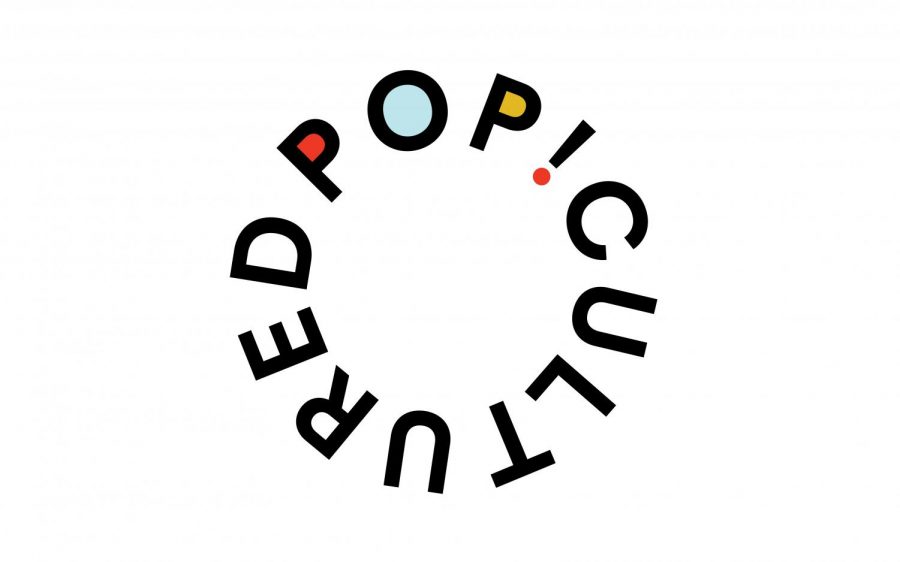
(Design by Malithi Gunawardena | Daily Utah Chronicle)
Pop Cultured: Scrutinizing Disability in the Horror Genre
February 25, 2020
Without a doubt, one of my favorite fiction genres has to be horror — I just can’t get enough of the mystery, twists, balancing between the cursed and sublime and, most especially, the monsters of all shapes and forms. Sure, other genres might be known for quirky and unusual characters between the dragons of fantasy or mutants of superhero tales, but in horror, they are the most particularly rife. You’ll find cruel shapeshifters, tentacled abominations, women who walk through walls and killers who contort their bodies into impossible shapes. Whatever the imagination can conceive of the human form, this genre takes to the furthest extremes.
Such a pattern ranges from sources from the classical canon to material that’s more recent and ingrained in pop culture. On one end, we see the Victorian Phantom of the Opera, with his hidden disfigured features, to cyberpunk visions of the future in 1988’s “Akira” through horrific depictions of bodily mutation. In short, we anticipate monsters to appear ugly, to think ugly and otherwise fall outside of what most deem the social norms of the mind and body.
But to those who live outside such expectations in reality, particularly disabled folks, horror can create a damaging image.
Where Horror and Disability Meet
It’s near impossible not to associate places such as hospitals and asylums with horror stories. Why is this? Certainly getting sick can be painful and frightening, thus bringing some grounding into the cliches of a zombie virus outbreak you must run away from, as we see in “World War Z.” Likewise, there remain stories of terror of “sane” people being treated for lobotomies, or people with mental illnesses wreaking deliberate havoc on an ordinary populace as seen in films from “Split” to “Psycho.” Several murderers in horror tend to be given what we perceive as malformed faces, from Jason Voorhees to Freddy Krueger to Leatherface.
Ultimately, a lot of horror fare ultimately embeds the message that sick people can be villainized to the extent of the zombified, that mental illness is a surefire ticket to bet on violent behavior and that bodily disfigurement is equivalent to the mark of an isolated torturer. However, illnesses, disorders and disabilities are hardly subjects that should be subjected to the light of terror. Growing up in a neurodivergent family, I don’t see schizophrenia as a subject that horror audiences are bound to associate with killers but rather the loving face of someone close to me. To witness disabilities villainized onscreen doesn’t merely leave a sour taste in my mouth, it causes me to despair at how willing we are to feed into prejudice in the name of making outwardly entertaining media.
Discerning the Reality of Disability
More one in four American adults are disabled, and yet according to a study conducted in 2015, less than 3% of characters in fiction films are. Where do the majority of these 3% of characters come from? Well, as put by Laura Elliot in Medium, “The fact is that the horror genre is the only genre in which disabled people are regularly represented at all.” When you next sit down to see a horror film, chances are that sickness, mental illness or bodily injury and corruption will be a part of the plot. Everybody fears gore and the loss of autonomy, so of course, it’s a safe bet for horror writers to dip their toes into.
Take, for example, one of the first true horror movies to have ever been produced, “Freaks.” This 1932 film depicts a woman who joins a circus and after angering those subjected to being on a freak show, she is ultimately punished by having her legs cut off and her face mutilated. The ultimate horror of this story is a cut and clear ableist formula to provoke a shock factor.
To become disabled, in horror, is the be-all end-all, the worst possible fate it seems that a person could face. Of course, this stigma is hardly true when the majority of disabled people have lives just about as regular as anybody else’s. You’ll find deaf people on public buses, blind people riding bikes, autistics in your classrooms and people who use canes in your office. Living with a disability isn’t at all a sentence to doom. It’s just a part of having an identity. In my own experiences, it’s far harder to live with stigma than a disability within itself. Certainly, horror stories that continue to follow in the tradition of “Freaks” today — from problematic portrayals in newer films ranging from “Midsommar” to “Us” — aren’t doing anything to help remedy this problem.
Despite how often horror skews portrayals of villains in coding them with disabilities, people who are disabled are three times more likely to be violently, emotionally or sexually assaulted or abused by those who aren’t. Ableism is an oft-overlooked prejudice, and it’s even more potent and threatening when mixed with other forms of prejudice. For instance, many are aware that people of color are disproportionally targeted by unjust police violence in the United States. However, fewer know that almost half of people killed by U.S. police are disabled, from cases of the violence toward a deaf Hispanic man, a black autistic teen and a black woman suffering from a mental breakdown. In these cases, the victims with disabilities were perceived as threatening and uncooperative because they behaved outside of easily readable social norms.
Reconciling a Genre with Solutions
Of course, it isn’t my goal to argue that horror is a trashy genre as some people take it to be. For a long time, despite my childhood fascination with monsters such as werewolves, ghosts and bigfoot, I was hesitant to put much faith into it. Back when Blockbuster existed, I remember closing my eyes when I’d walk past the section for those films, disgusted by some of the blood-splattered and grotesque, irreverently body-bending covers. It wasn’t until I wound up reading Mary Shelley’s “Frankenstein” in high school that I suddenly connected with horror. I began to seek out other works of literature and film which explored the frightening and disability in thoughtful ways, from reading H. G. Wells’ “The Invisible Man” to watching Tim Burton’s “Edward Scissorhands,” or appreciating newer horror that likewise subverts its messages about disability, like “A Quiet Place.”
These horror stories — which examine disability through the lens of creating sympathetic and heroic disabled protagonists — are those that I’ve connected to with my personal experiences with a disability over those of any other genre. Navigating social spheres which tend to be unkind toward disabled persons is frightening, and to see these stories reclaimed in horror is nothing short of a victory. Although not all horror films subvert disability well, one can only appreciate when movies like “Bird Box” or “Hush” are released.
It likewise isn’t possible to prevent derogatory horror from being made. However, approaching horror as a whole, it is possible to learn to recognize and critique its treatment of its demographics at hand. After all, although I can’t say that my faith in the horror genre is at all perfect, my hope in it is.


